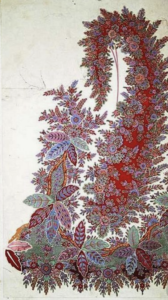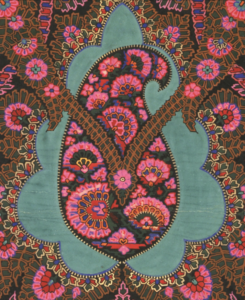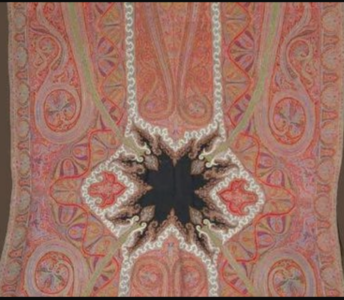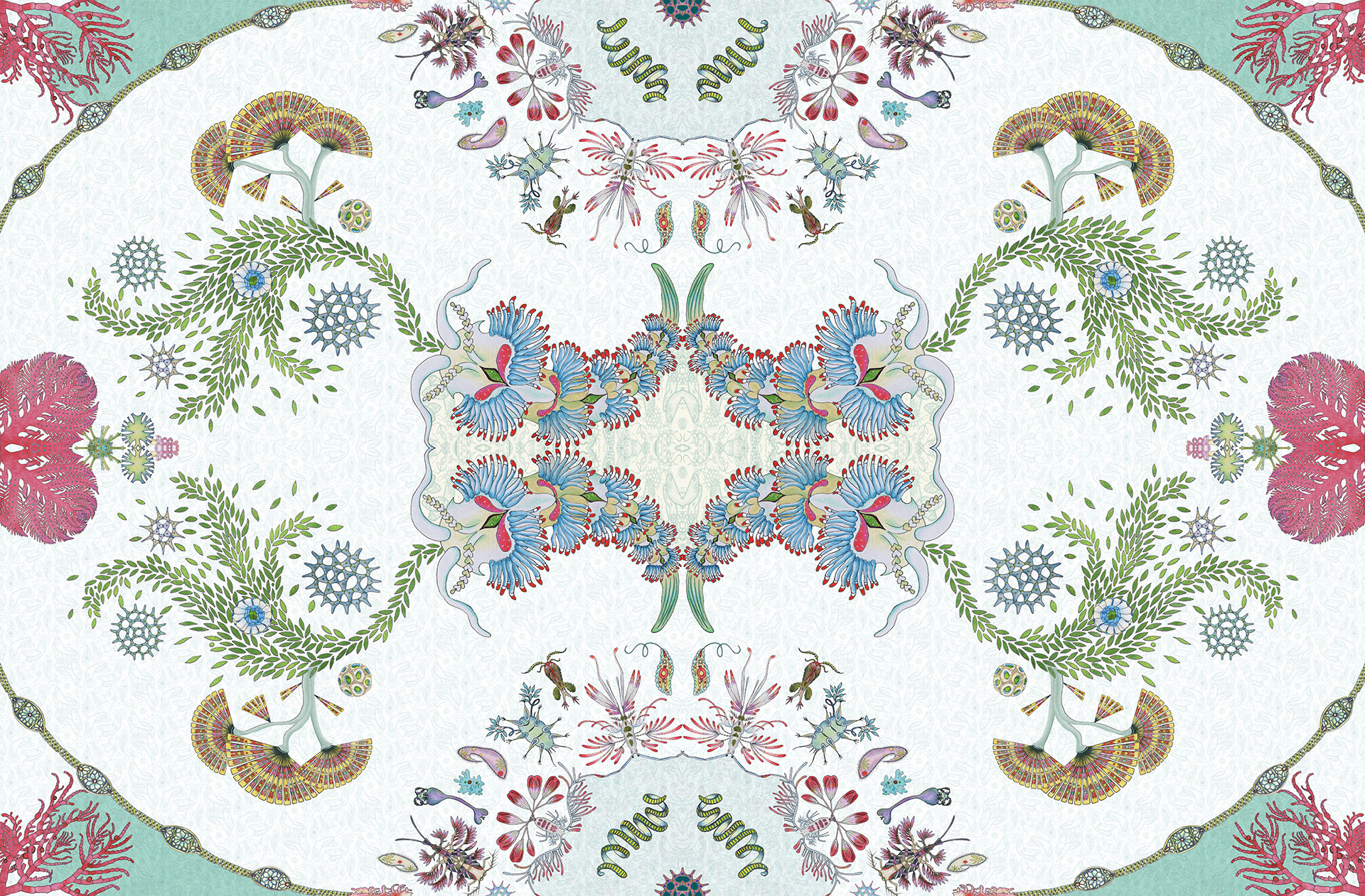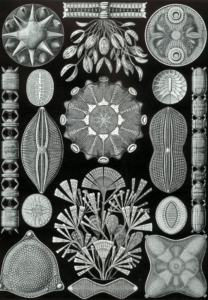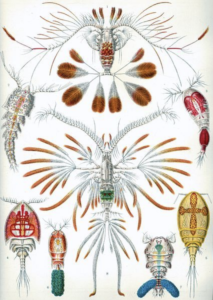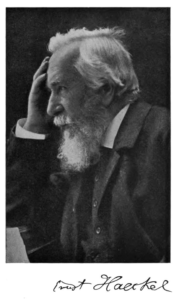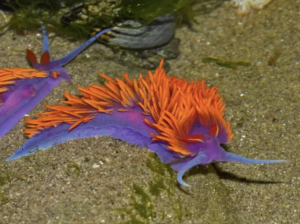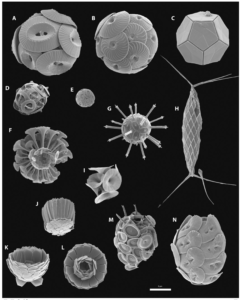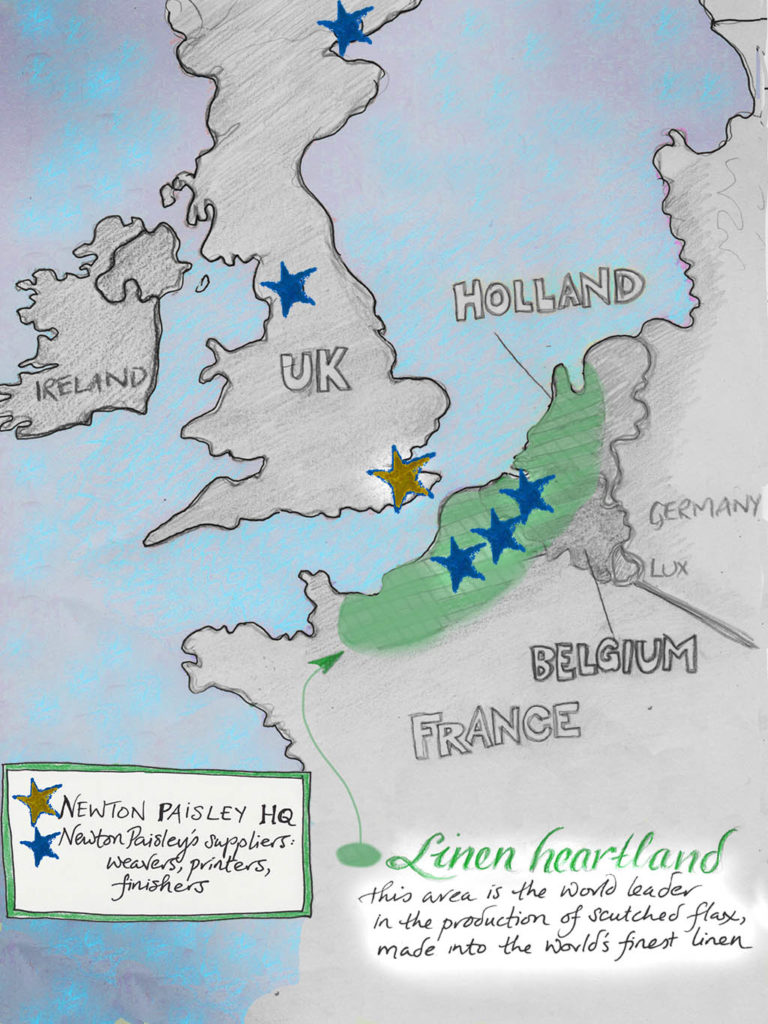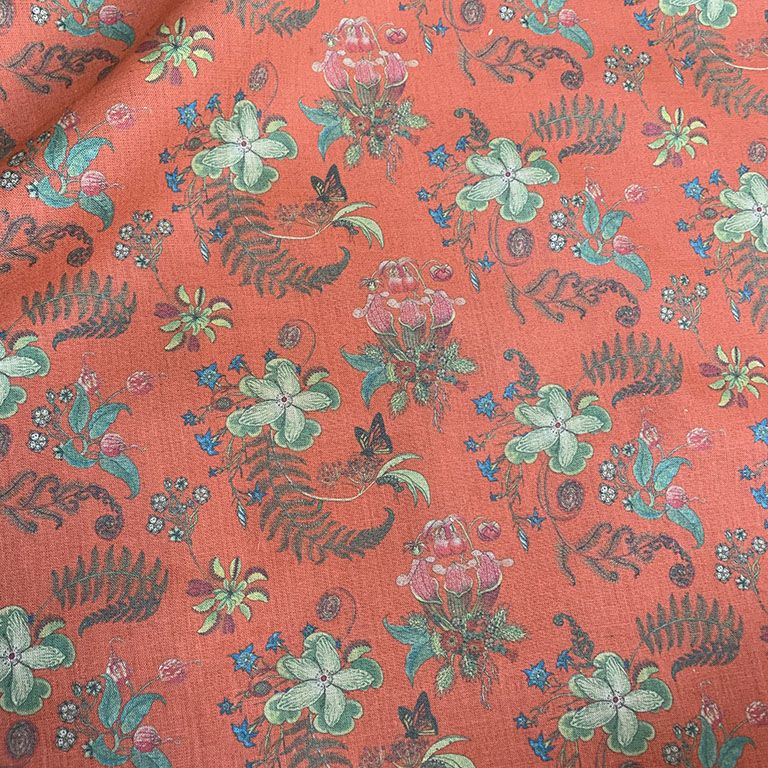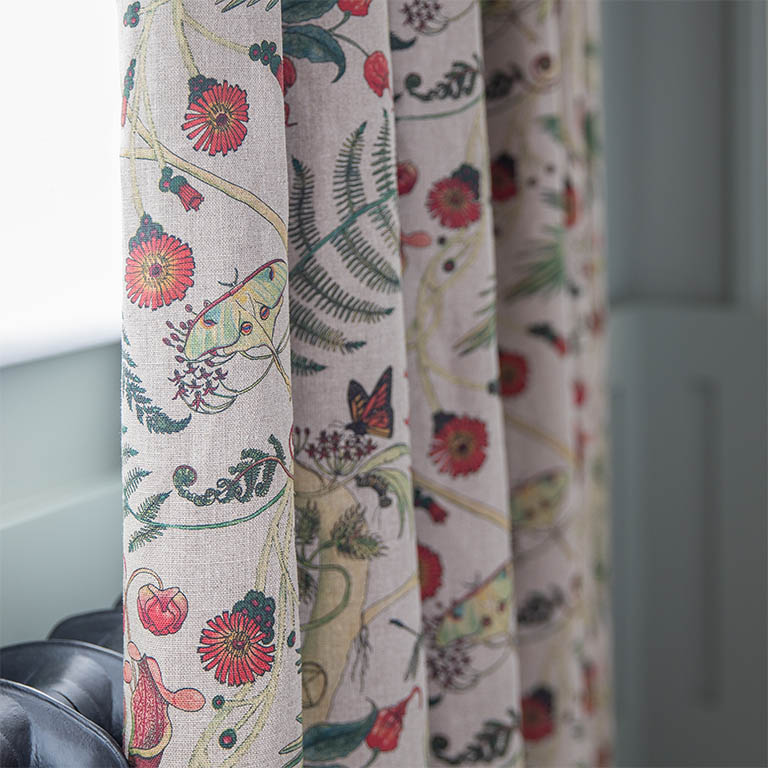This is an excerpt from an article in Home Accents Today magazine by Jennifer Burton. The full piece, from December 2019, can be found here.
Wallpaper, fabric artist sketches brighter future for endangered species
Evolution (noun): A gradual process in which something changes into a different and usually more complex or better form.
As a longtime conservation biologist, Susy Paisley could probably give a more scientific definition of evolution.
Or she could just tell you the story of her career.
I met Paisley briefly at High Point Market, where her beautifully detailed wallpaper and fabric prints were on display in the Zoe Bios Creative showroom.
I was intrigued by a talk she gave, in partnership with the Sustainable Furnishings Council, about “Biodiversity in Design,” and her illustrations that focus on neglected and endangered species.
After learning more about her story, I knew she was perfect for this column and this issue (which highlights wallpaper and fabric in our Pattern Play section). She is the embodiment of Good Work(s) — not only giving back to a worthy cause but dedicating her life to protecting the environment.
Paisley spent 25 years as a conservation biologist. She has extensively studied spectacled bears in the Bolivian cloud forest and other highlights of her studies included harpy eagles in the Lacandon rainforest in Mexico, duck-billed platypuses in Australia, orchids in Romania and pangolins in Kenya.
With no formal art training, Paisley began illustrating her field notes with intricate depictions of flora and fauna.

Susy Paisley spent time living in the cloud forest of Bolivia studying the spectacled bear.
As a scientist, Paisley was attuned to nature’s patterns but she noticed the nature imagery used in interiors and fashion was often bland, abstract or inaccurate. She wondered why the amazing wild species she studied as a biologist were missing.
“I saw an opportunity to go further with wild species and conservation storytelling. I just wanted to geek things up a little bit!” she told me.
She realized she might reach more people and educate them about wonderful wild creatures, many of which were being wiped out, through the design route rather than academia.
In 2010, she received an “Ideas Factory” grant from the University of Kent, where she worked. She spent several years figuring out the best way to tell stories about endangered species and conservation. In 2016, she launched Newton Paisley — named for her late mother, Anne Newton Paisley, a High Point native who came from a family with textile industry connections.
“I love the idea of the fabric of life, like the fabric of nature, and the threads that connect us to each other and to the natural world,” Paisley said.
….
Thank you Jennifer for this lovely piece, and for making mr rummage through old boxes for the above photo. Turns out the late 90s weren’t as well documented photographically as things are now! The rest of the story can be found here.
